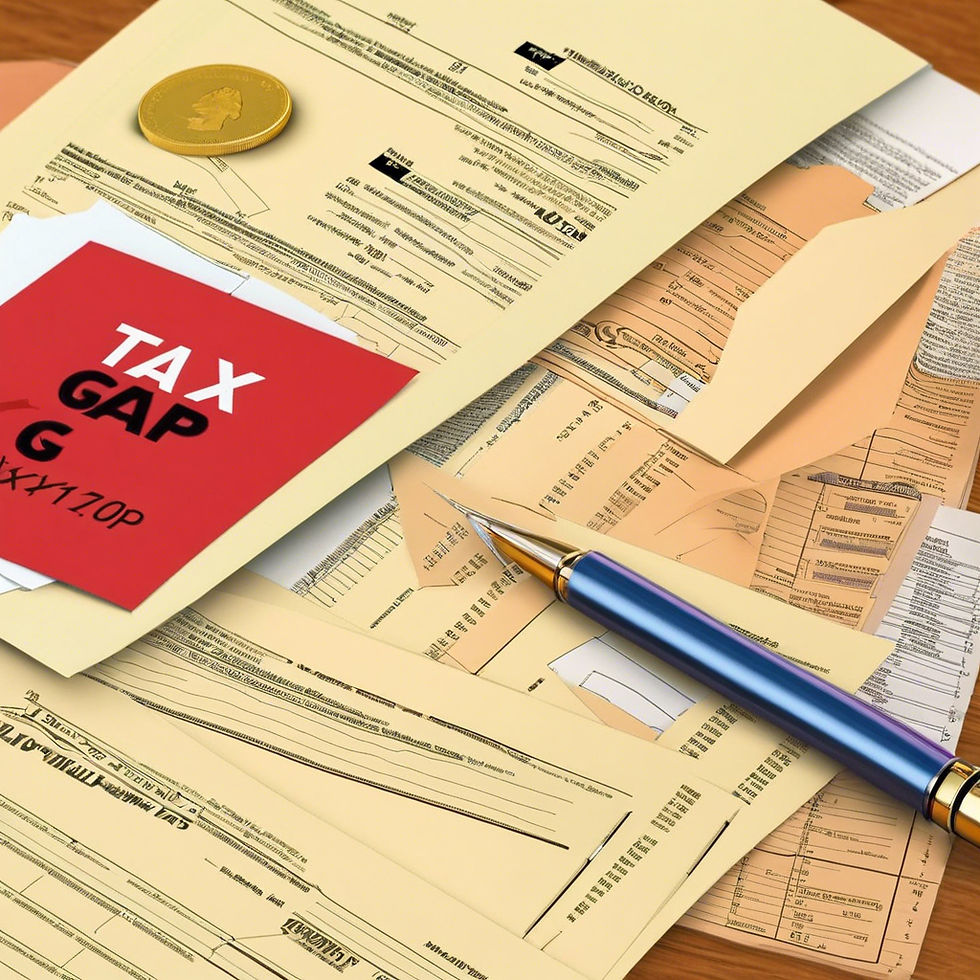Understanding the IRS 2022 Tax Gap Projections: What It Means for You
- Rio Bayani
- Oct 11, 2024
- 2 min read
The IRS recently released its projections for the tax gap for the year 2022, showing a gross tax gap of $696 billion. But what does this mean for everyday taxpayers like you? Let’s break it down and highlight some key points that can help you navigate your own tax obligations.

What is the Tax Gap?
The tax gap is essentially the difference between the total amount of taxes owed and what is actually paid on time. This gap can arise for several reasons:
Non-filing: Individuals who do not file their tax returns.
Underreporting: Taxpayers who report less income than they actually earned.
Underpayment: Individuals who file on time but do not pay the full amount due.
In 2022, the breakdown of the tax gap showed that underreporting accounted for a significant 77% of the total. This suggests that many taxpayers may be unaware of their reporting obligations or may make honest mistakes.
The Voluntary Compliance Rate
One reassuring piece of news is that the voluntary compliance rate has remained steady at about 85%. This means that a significant majority of taxpayers are fulfilling their obligations and paying their taxes correctly and on time. The IRS is actively working to maintain and improve this rate by providing better services and resources to help you file accurately.
Growth in the Economy
The increase in the tax gap from previous years can be largely attributed to economic growth. With the economy expanding, the overall tax liabilities have increased, leading to a larger gap in absolute terms. However, this doesn't necessarily mean that taxpayers are behaving any differently; it reflects broader economic trends rather than changes in individual taxpayer behavior.
IRS Efforts to Improve Compliance
Following the passage of the Inflation Reduction Act in 2022, the IRS has ramped up its compliance activities. This includes targeted efforts to collect taxes owed by high-income earners who may not be filing or reporting correctly. These efforts are expected to help close the tax gap over time.
What Can You Do?
As a taxpayer, there are several steps you can take to ensure you remain compliant and avoid any issues:
Stay Informed: Regularly check for updates from the IRS regarding tax laws and requirements.
Utilize Resources: Take advantage of IRS services, such as the Volunteer Income Tax Assistance program, which can provide free help.
File Accurately and On Time: Ensure that your tax returns are complete and submitted by the due date. If you're unsure about anything, consider consulting a tax professional.
Keep Records: Maintain organized records of your income, deductions, and any correspondence with the IRS.
The Bottom Line
The IRS’s 2022 tax gap projections provide valuable insight into the state of tax compliance in the U.S. While the tax gap is significant, the steady voluntary compliance rate shows that most taxpayers are doing their part. By staying informed and utilizing available resources, you can ensure that you remain compliant and contribute to a fair tax system.
For more details on the tax gap and the IRS’s efforts, you can refer to the IRS Tax Gap Projections publication. Remember, being proactive about your taxes not only helps you but also supports the overall integrity of the tax system.



Comments